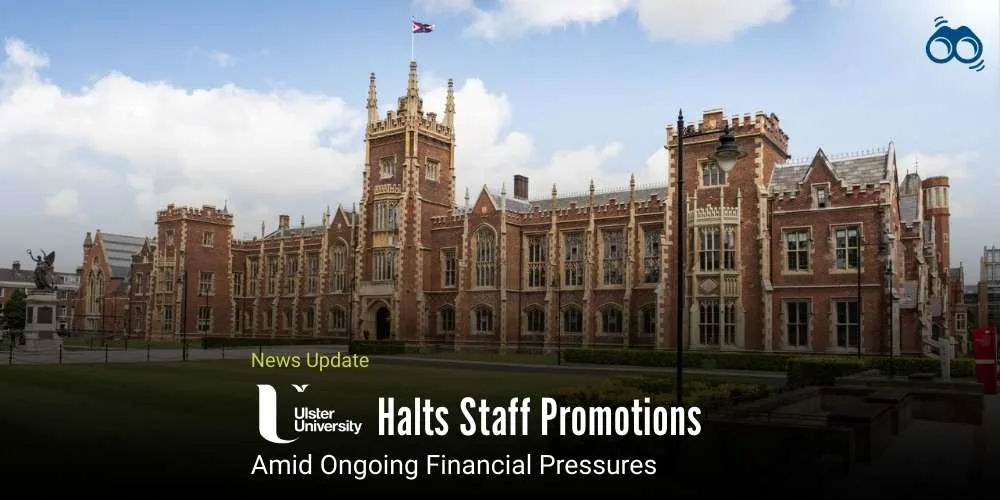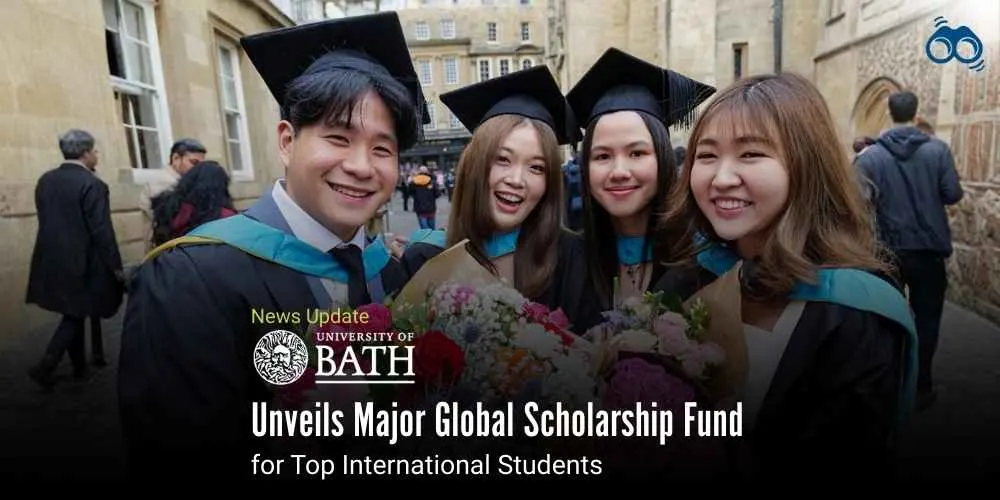Joint Education Institute Enhances UK–China Higher Education Collaboration
Queen Mary and Nanchang University Expand Global Education Collaboration
Two of the world's most prestigious universities have come together to advance a vision of joint learning and discovery, setting a new tone in the realm of international academic collaboration. Being somewhat but not quite formal, the launch served as a metaphor for the unifying power of education across and beyond national boundaries. Queen Mary University and Nanchang University are driven by a joint initiative to collaborate, with the shared goal of providing their students with the finest international opportunities. The growing significance of international higher education responds to only half of the incentive; the rest is marked by the role of U.K.-China cooperation, which will shape the direction of global education with this very act.
The opening of the joint educational establishment, with the charter signed on November 10 2025, between Queen Mary University of London and Nanchang University in the city of Nanchang, China, now enters the official history books. In this, so initiatory of the whole history of this partnership marked as far back as 2013, the first of UK-China education collaborations is made historic. Dignitaries from both the UK and China graced the day. These included Zheng Lei, Director of Jiangxi Provincial Department of Education; Chen Yeguang, President of Nanchang University; Colin Bailey, President and Principal of Queen Mary University; and Wen Wang, Vice-Principal and Executive Dean for Science and Engineering at Queen Mary.
Professor Colin Bailey reaffirmed the joint education institute as the start of a bold step forward for this centuries-old partnership. He maintained that both universities are in the habit of excellence in the realm of research and education and further stated that together they form the embryonic world-class environment, which will be nurturing in learning and discovery. He concluded by pointing out that this partnership would give students an international experience which was grounded in the rigour and freedom of thought and innovation, such that they would become budding scientists, doctors, and medical leaders in the field of global health.
The Nanchang University Queen Mary School is going to plan an academic package, as envisioned, which will be effective from September 2026. Despite the onset of an evolving phase, two additional undergraduate programs, that is, Precision Medical Sciences and Biomedical Data Sciences, will be initiated together with an MSc program in Advanced Human Genomics in London, continuing for the same duration in Nanchang, with acknowledgement to vital contributions in transnational higher education.
Furthermore, this initiative essentially builds on the Queen Mary-Nanchang Joint Programme, first delivered in 2013. With nearly 4,000 students enrolled since then, over 2,000 have moved to postgraduate education and employability in widely inquired Biomedical Sciences and Clinical Biomedicine. The collaboration has already been considered an outstanding example of cooperation in international education that brings together the great forces from both British and Chinese higher education in China.
In another note, the university group's President gave a keynote address whilst in China, addressing the World University Presidents Forum in Hangzhou on Saturday, 8th November at the Hangzhou International Expo Centre. He argued for AI and the future of higher education, presenting the Queen Mary model of responsible AI, student development, and research translation. The professor also sought to engage with university principals to explore possibilities for the UK-China educational collaboration and general international collaborations.
In context, the Queen Mary and Nanchang Joint School represents an enormous step taken in the direction of global education. The initiative further capitalises on increasing the ranking of these institutions by introducing new programs and assistance mechanisms for international students, providing tangible opportunities for the next generation, and thereby bridging the gap between the two institutions.
Editor’s Note:
The creation of the Joint Education Institute between Queen Mary University of London and Nanchang University is an important step for international higher education. It shows a stronger commitment to both academic excellence and global collaboration. The new programmes in precision medicine, biomedical data sciences, and advanced genomics will widen academic opportunities and support research in health and science, fields that are constantly changing and growing. This partnership also sets a clear standard for transnational higher education between the UK and China. Thousands of students have already benefited from earlier joint programmes, and this new institute builds on that success. It highlights both universities as pioneers in international academic cooperation, helping graduates to become global citizens and innovators. The launch of the institute is more than just an expansion of courses. It is a statement about the role universities play in shaping the future. Higher education should not only be about academic study but also about creating global impact, preparing students to solve real challenges, and inspiring change across the world.
As per Skoobuzz, the Joint Education Institute reflects the true spirit of global education. By crossing borders and combining strengths, Queen Mary University and Nanchang University are giving students the chance to learn, innovate, and lead in ways that will make a lasting difference for generations to come.
FAQs
Q1. What is the Queen Mary and Nanchang University Joint Education Institute?
The Joint Education Institute is a new academic collaboration between Queen Mary University of London and Nanchang University in China. Officially launched on 10 November 2025, it represents a major step in China's education partnership and aims to provide students with world‑class opportunities in research and learning.
Q2. How will the new joint institute enhance UK–China education collaboration?
The institute strengthens ties between the UK and China by combining the academic excellence of both universities. It expands the scope of transnational higher education, offering students international experiences, joint supervision, and access to advanced programmes in health and science.
Q3. What programmes will be offered at the Joint Education Institute in Nanchang?
From September 2026, the institute will introduce two new undergraduate programmes—Precision Medical Sciences and Biomedical Data Sciences. In addition, a postgraduate MSc in Advanced Human Genomics will be delivered in London, with a continuation course in Nanchang.
Q4. How does Queen Mary University expand its presence in China through this initiative?
The launch builds on the Queen Mary–Nanchang Joint Programme, first delivered in 2013. Since then, nearly 4,000 students have enrolled, with over 2,000 graduates progressing to further study and employment worldwide. The new institute expands this success, reinforcing Queen Mary’s role in international academic collaboration.
Q5. What opportunities does the joint institute provide for international students?
Students will gain access to innovative programmes, joint teaching, and research opportunities across both the UK and China. They will benefit from exposure to different academic environments, preparing them to become global citizens and innovators in fields such as biomedical sciences and clinical biomedicine.
Q6. Why is this partnership considered a milestone in higher education in China?
The collaboration has already been recognised as a model of transnational higher education, combining the strengths of British and Chinese systems. The new institute sets a benchmark for future partnerships, showing how universities can work together to address global challenges and advance academic excellence.
Q7. What other activities took place during the launch period?
During his visit to China, Professor Colin Bailey, President and Principal of Queen Mary University, delivered a keynote address at the World University Presidents Forum in Hangzhou. He spoke on the theme of AI and the future of higher education, outlining Queen Mary’s approach to responsible AI, talent development, and research translation.














0 Comments (Please Login To Continue)